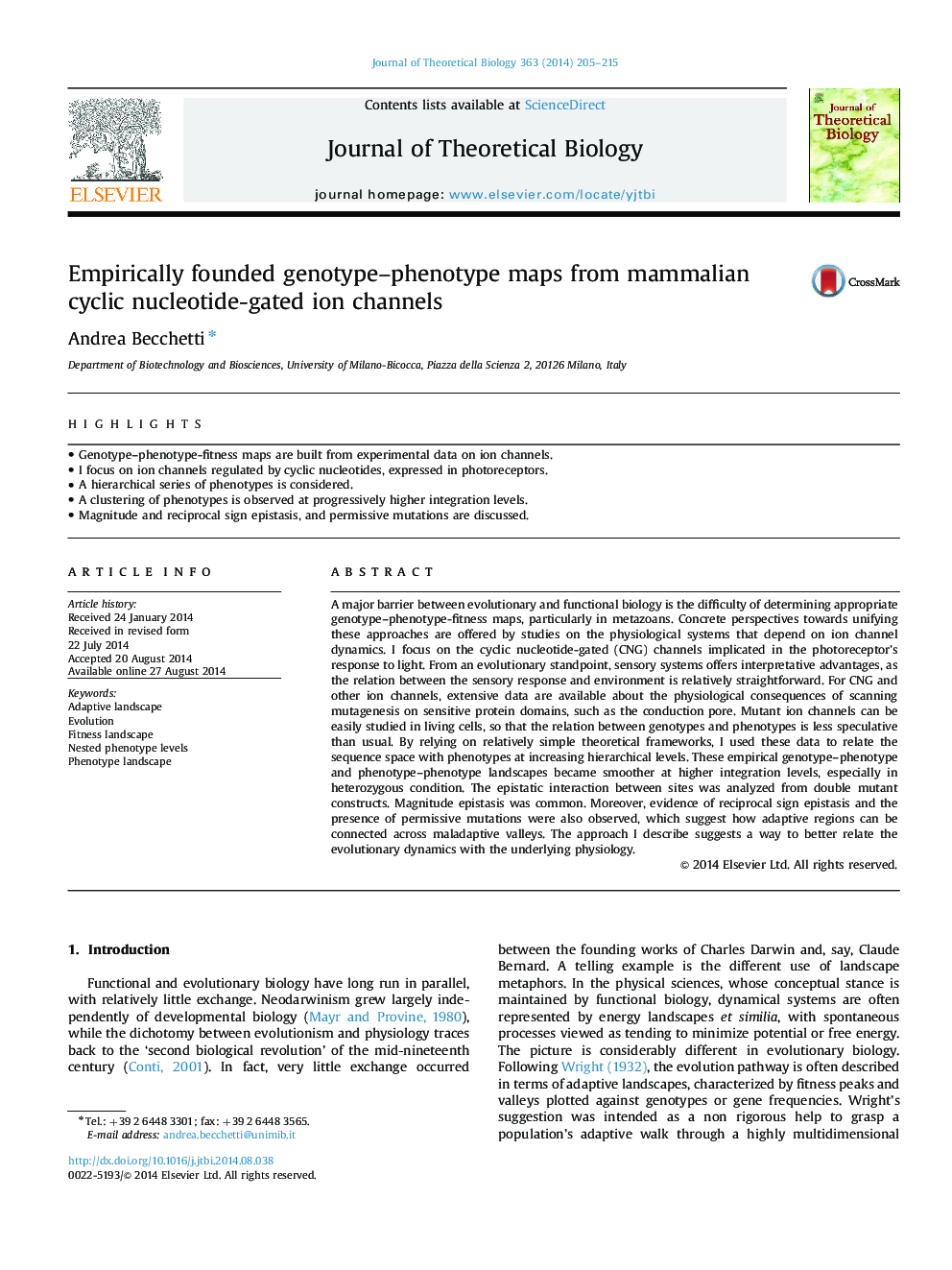| Article ID | Journal | Published Year | Pages | File Type |
|---|---|---|---|---|
| 6370213 | Journal of Theoretical Biology | 2014 | 11 Pages |
Abstract
A major barrier between evolutionary and functional biology is the difficulty of determining appropriate genotype-phenotype-fitness maps, particularly in metazoans. Concrete perspectives towards unifying these approaches are offered by studies on the physiological systems that depend on ion channel dynamics. I focus on the cyclic nucleotide-gated (CNG) channels implicated in the photoreceptor's response to light. From an evolutionary standpoint, sensory systems offers interpretative advantages, as the relation between the sensory response and environment is relatively straightforward. For CNG and other ion channels, extensive data are available about the physiological consequences of scanning mutagenesis on sensitive protein domains, such as the conduction pore. Mutant ion channels can be easily studied in living cells, so that the relation between genotypes and phenotypes is less speculative than usual. By relying on relatively simple theoretical frameworks, I used these data to relate the sequence space with phenotypes at increasing hierarchical levels. These empirical genotype-phenotype and phenotype-phenotype landscapes became smoother at higher integration levels, especially in heterozygous condition. The epistatic interaction between sites was analyzed from double mutant constructs. Magnitude epistasis was common. Moreover, evidence of reciprocal sign epistasis and the presence of permissive mutations were also observed, which suggest how adaptive regions can be connected across maladaptive valleys. The approach I describe suggests a way to better relate the evolutionary dynamics with the underlying physiology.
Related Topics
Life Sciences
Agricultural and Biological Sciences
Agricultural and Biological Sciences (General)
Authors
Andrea Becchetti,
